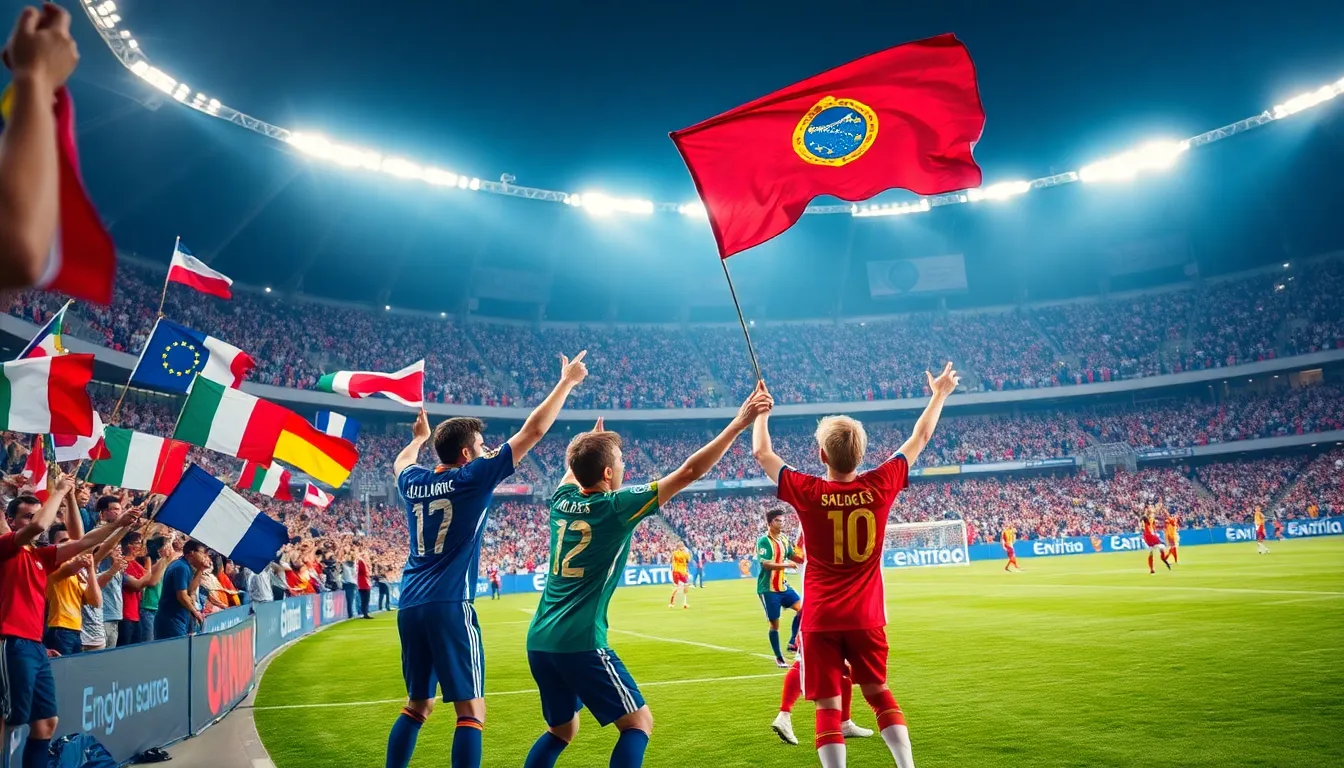The UEFA European Under-19 Championship games are where future football stars are born, and trust me, they’re not just kicking a ball around. These young talents are out to prove they’ve got what it takes to dazzle on the big stage. Picture this: a mix of raw energy, skill, and the occasional hilarious blunder that’ll have fans laughing and cheering in equal measure.
Table of Contents
ToggleOverview of UEFA European Under-19 Championship Games
UEFA European Under-19 Championship Games represent a key stage in European football development. These matches feature the continent’s most talented young players, often becoming stepping stones to senior national teams. The competition occurs every year, demonstrating the importance of youth engagement in the sport.
Countries from across Europe participate, vying for the title and international recognition. Teams go through a qualification stage, narrowing the field to the top contenders who compete in the final tournament. The hosting nation typically stages an exciting series of matches, bringing fans together to support their teams.
Talented players often catch the eyes of scouts during these games. Historically, many stars, like Harry Kane and Jadon Sancho, showcased their skills here before rising to fame in professional leagues. Regional rivalries add layers of intensity, with matches frequently filled with high stakes.
Scoring highlights define many of the tournament’s games, showcasing the attacking flair of competing teams. Performances often capture the excitement of emerging talent, thrilling spectators with dazzling goals and skillful plays. Statistics support the games’ competitive nature, with many matches decided by narrow margins.
The UEFA European Under-19 Championship emphasizes teamwork, resilience, and the pursuit of excellence. Through these experiences, young athletes develop critical skills and gain invaluable exposure to high-stakes football. Fans eagerly anticipate each game, boosting the tournament’s atmosphere and excitement.
History of the Tournament


The UEFA European Under-19 Championship boasts a rich history, showcasing emerging football talent since its establishment. This tournament has grown significantly, reflecting changes in European football and the development of young players.
Inception and Evolution
First held in 1948, the tournament began as the European Under-18 Championship. Over time, UEFA restructured it, transitioning to the current format in 2002, featuring participants aged 19 and under. This evolution aimed to create a more competitive environment. Teams from various European nations now routinely compete, introducing fresh talent onto the international stage. Since then, the tournament has produced numerous football stars who later excelled in professional careers.
Notable Milestones
Several key milestones mark the tournament’s history. In 2002, Spain claimed its first title, signaling its dominance in youth competitions. Following that, Germany secured victory in both 2008 and 2010, demonstrating consistent strength in youth development. The 2018 tournament saw a dramatic final, with Portugal clinching their first title after defeating Italy. Additionally, many players recognized in senior leagues, including renowned stars like Raheem Sterling and Jadon Sancho, showcased their skills at this critical stage. Each edition of the championship contributes to the tournament’s prestige, highlighting its significance in European football.
Format of the Championship
The UEFA European Under-19 Championship features a well-defined structure that promotes competition among Europe’s best young footballers.
Qualification Process
Qualifying for the tournament involves a series of matches among national teams. Teams enter three rounds of qualifiers, with the top sides advancing to the final stage. The 53 member associations participate, competing for limited spots. Six groups emerge in the first round, followed by the top contenders advancing to knockout phases. This rigorous process identifies the most talented teams, ensuring a high level of play in the final competition.
Tournament Structure
The tournament consists of a group stage followed by knockout rounds. Four groups form during the initial phase, each containing four teams. Teams compete in a round-robin format, with the top two from each group progressing to the quarter-finals. Matches, characterized by their intensity, culminate in semi-finals, leading to the final that determines the champion. This structure not only highlights emerging talent but also fosters regional rivalries and enhances the fans’ excitement.
Teams to Watch
Several teams stand out as key contenders in the UEFA European Under-19 Championship, deserving attention for their history and promising talent.
Historical Performers
Spain consistently ranks among the top performers, claiming a remarkable ten titles. This success reflects a strong footballing tradition and a robust youth development system. Germany follows closely with a history of excellent results, securing the championship titles in 2008 and 2010. Countries like France and Portugal have also displayed success, each achieving multiple podium finishes. Their established youth programs and competitive leagues provide a solid foundation for nurturing future stars.
Emerging Teams
Norway has emerged as a promising force in recent years, fueled by a wave of talented young players. With the likes of Erling Haaland’s influence, their growth in the tournament signals a rise in competitive stature. Additionally, the Netherlands showcases a focus on skill development, bringing fresh talent to the forefront. Countries such as Georgia and Scotland are also demonstrating potential, showcasing exciting performances in qualification stages. These emerging teams promise to bring unpredictability and thrilling matches to the UEFA European Under-19 Championship landscape.
Memorable Matches
Memorable matches in the UEFA European Under-19 Championship showcase thrilling moments and unforgettable performances from the tournament’s rich history.
Classic Finals
Classic finals often capture the essence of youth football. In 2018, Portugal defeated Italy in a dramatic showdown, sealing their victory with a last-minute goal. The 2002 final marked Spain’s first title win, demonstrating their emerging dominance in youth football. Germany’s 2010 victory against the Czech Republic highlighted their resilience, showcasing a well-coordinated team effort. Each of these finals not only reflected the high stakes but also the exciting talent on the pitch, ultimately contributing to the tournament’s legacy.
Upsets and Surprises
Upsets and surprises frequently elevate the drama of this championship. In 2016, Serbia stunned the football world by defeating the highly favored France team, progressing to the finals against all odds. Another notable surprise occurred in 2019, when the Netherlands triumphed over reigning champions Portugal, showcasing their rising talent. Such unexpected outcomes capture the unpredictability of youth competitions, often reshaping reputations and providing thrilling experiences for fans. These moments emphasize the tournament’s competitive nature and capacity to surprise both players and spectators alike.
The UEFA European Under-19 Championship stands as a vital cornerstone in the development of young football talent. It not only showcases the skills of emerging players but also serves as a launchpad for future stars in the professional arena. The tournament’s competitive structure and rich history create an environment where passion and determination thrive.
With countries like Spain and Germany leading the charge and new contenders emerging, each championship brings fresh excitement and anticipation. Fans can look forward to thrilling matches filled with unforgettable moments that highlight the spirit of youth football. As the tournament continues to evolve, it remains a key event in the football calendar, promising to deliver the next generation of talent to the world stage.


